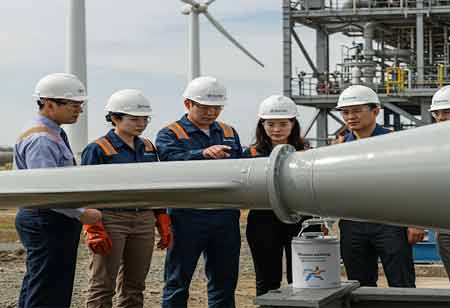Thank you for Subscribing to Construction Business Review Weekly Brief
Specials
- Apartment and Condominium Contractors Canada
- Decking Canada
- Architectural Glass Europe
- MEP APAC
- Construction Saudi Arabia
- German Apartment and Condominium Contractors
- Construction Law APAC
- Outdoor Construction
- Foundation Construction Canada
- MEP Canada
- Kitchen and Bath
- Cold Storage Construction APAC
- Precast Concrete Europe
- Construction Staffing Europe
- Pre-Construction Services
- Flooring System APAC
- Scaffolding Canada
- Swimming Pool Construction Canada
- Construction Management Canada
- Cold Storage Construction Canada
- Flooring Systems Europe
- Residential Construction
- Concrete Canada
- Construction Cladding Europe
- Construction Cladding APAC
- Concretes, Aggregates and Construction Materials APAC
- Concretes, Aggregates and Construction Materials Europe
- Commercial Contractors Europe
- Commercial Contractors APAC
- Dummy
- Construction Insulation, Coating and Waterproofing
- Construction Management APAC
- Landscaping Canada
- Construction Coating Europe
- Construction Tech Startups Europe
- Insulation Services Europe
- Mechanical Contractor Canada
- Mould Remediation and Testing Europe
- Swimming Pool Construction APAC
- Building Sealing Solutions Europe
- Construction Engineering Services
- Mechanical Electrical and Plumbing
- Roofing Systems Europe
- Architectural Glass APAC
- Startups APAC
- Construction Forensic and Owners Representative
- Flooring System
- Waterproofing APAC
- Wall Systems
- Safety and Compliance Europe
- Construction Equipment
- Modular and Prefab Construction
- Architectural Glass
- Construction MENA
- Construction Demolition and Recycling Europe
- Modular Construction Europe
- Construction Interiors
- Steel Building APAC
- HVAC
- Doors and windows
- Modular Construction APAC
- Building Information Modeling APAC
- Sustainable Construction APAC
- Building Restoration and Maintenance
- Commercial Contractors
- Specialty Construction
- Construction Engineering Canada
- Construction Engineering MENA
- Modular Construction Canada
- Construction Demolition Canada
- Roofing and Siding Systems
- Construction Latam
- Construction Staffing
- Roofing Systems APAC
- Construction Consulting
- Steel Building Europe
- Construction Demolition and Recycling APAC
- Safety and Compliance APAC
- Concretes, Aggregates and Construction Materials
- Construction Cladding
The Role of Construction Safety Technologies
Construction safety technology integration is becoming more necessary in today's fast-paced construction industry.

By
Construction Business Review | Wednesday, January 17, 2024
Stay ahead of the industry with exclusive feature stories on the top companies, expert insights and the latest news delivered straight to your inbox. Subscribe today.
Summary: Construction safety technology, driven by AI, ML, and IoT, transforms safety by predicting hazards, enhancing surveillance, automating tasks, and utilising AR and drones, ensuring proactive prevention and efficient risk management.
FREMONT, CA: Construction safety technology integration is becoming more necessary in today's fast-paced construction industry. This industry, which includes wearable technology and cutting-edge software, is crucial for lowering accident rates and safeguarding worker wellbeing. Their role extends beyond mere surveillance and compliance; they are catalysts for proactive risk management, revolutionising how construction sites are monitored, hazards are predicted, and safety is ingrained into every aspect of the construction process.
The Rise of Construction Safety Technology
The construction business is transforming because of the advancement of construction safety technologies, which are adapting quickly to the increasing complexity and size of contemporary projects. One major development is using drones, which provide real-time monitoring and inspection while reducing the time and labour needed for site evaluations.
Software Solutions for Enhanced Safety
Sophisticated software solutions have ushered in a new era of accuracy and efficiency in construction safety technology. Construction-specific project management solutions incorporate scheduling, resource allocation, and safety protocol management, guaranteeing that safety is essential to planning and execution.
Sensor-equipped smart helmets offer proactive safety by monitoring ambient factors, heart rates, and weariness in addition to head protection. Data and analytics are essential, gathering information from wearables, drones, and Internet of Things devices to assist in making decisions and forecasting any risks. In times of crisis, emergency response systems and communication technologies improve coordination and promote readiness. Construction safety technology keeps up with the expansion and establishes new benchmarks for proactive and preventative safety as the industry adopts these technologies.
Wearable Technology in Construction Safety
With its diverse approach to tracking and controlling worker well-being on construction sites, wearable technology has become a disruptive force in the field of construction safety. With their diverse array of sensors, these gadgets act as personal protectors, keeping an eye on health indicators and vital signs and issuing cautionary signals for signs of exhaustion or stress. Beyond the individual, wearables monitor the surroundings, identifying dangers such as poisonous fumes or extremely high or low temperatures. These gadgets produce data that helps decision-making by spotting trends and possible hazards on building sites.
By reducing downtime and raising employee morale, wearables improve overall productivity and facilitate teamwork with built-in communication functions. Additionally, wearables aid in compliance and training by assisting employees with procedures and serving as a reminder of safety guidelines. The potential for wearables in construction safety is still enormous as technology develops. In the future, these gadgets could offer professionals a more advanced safety net by combining technological innovation and human oversight to create a safer and more productive workplace.





